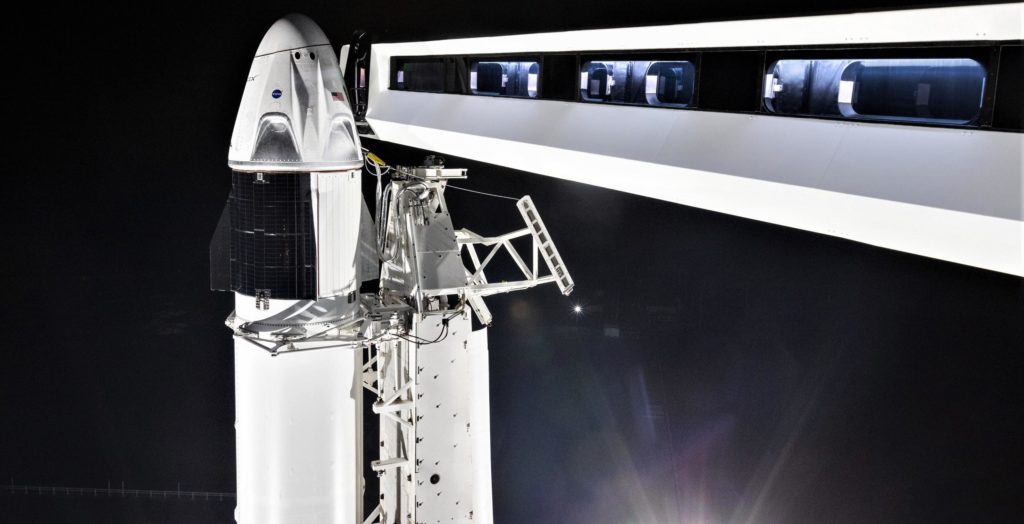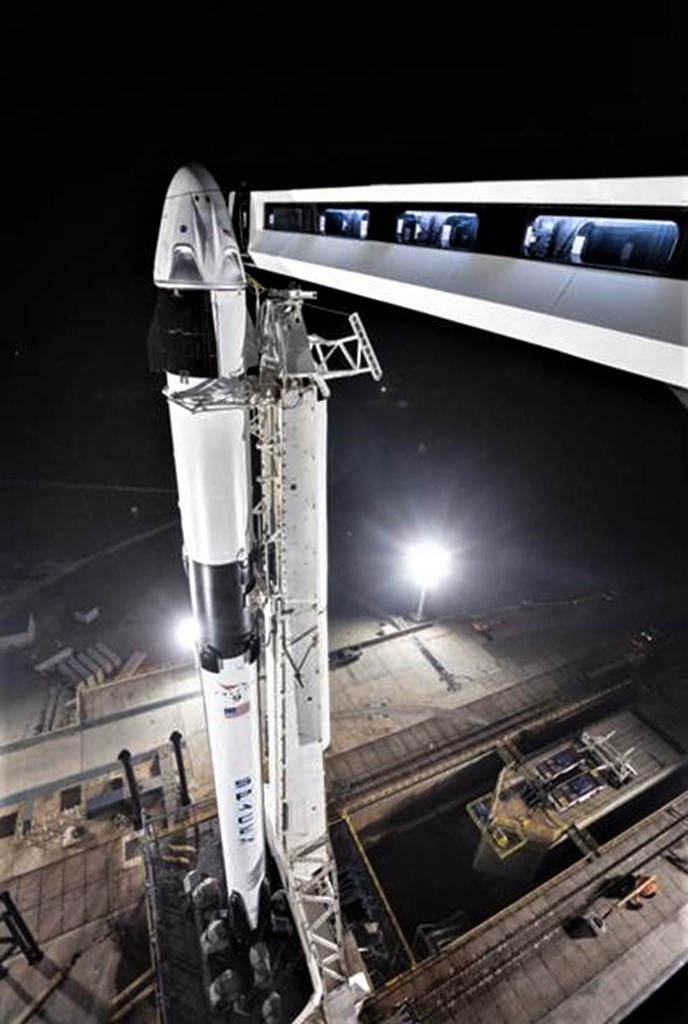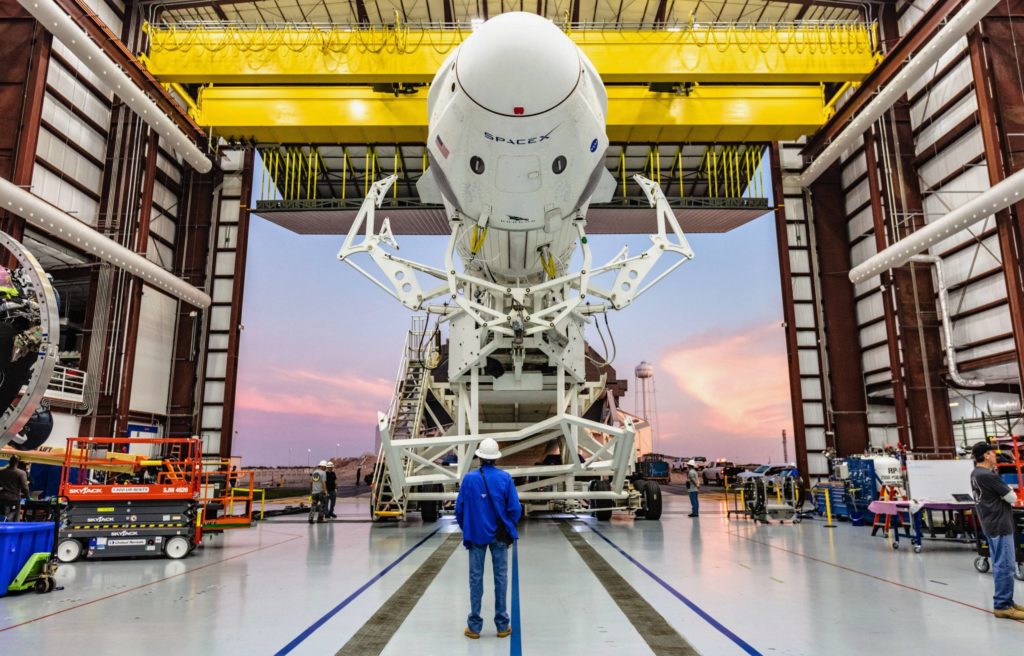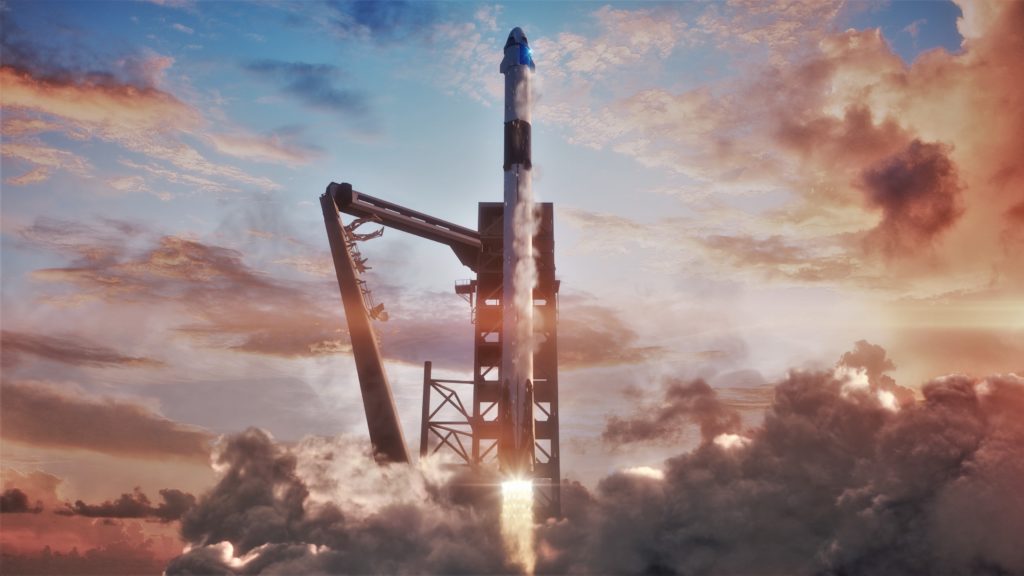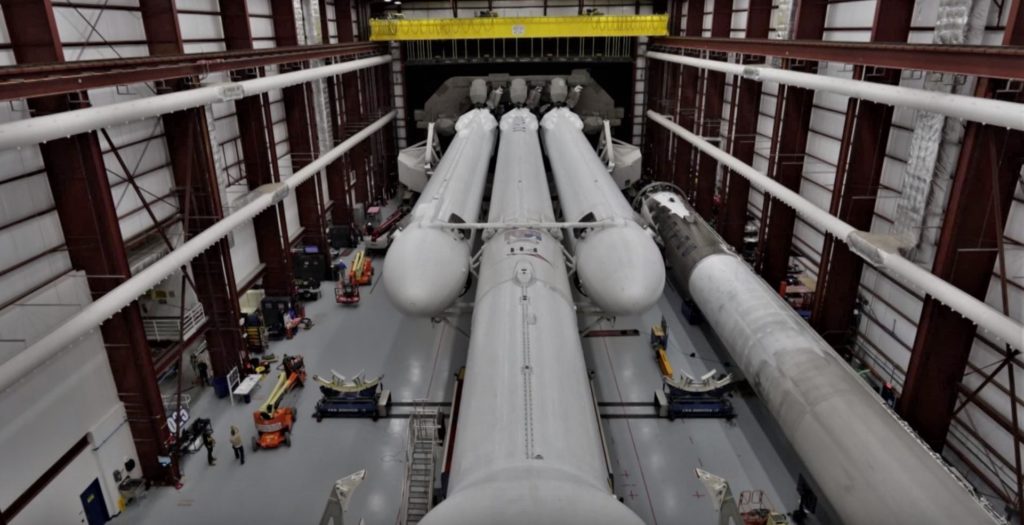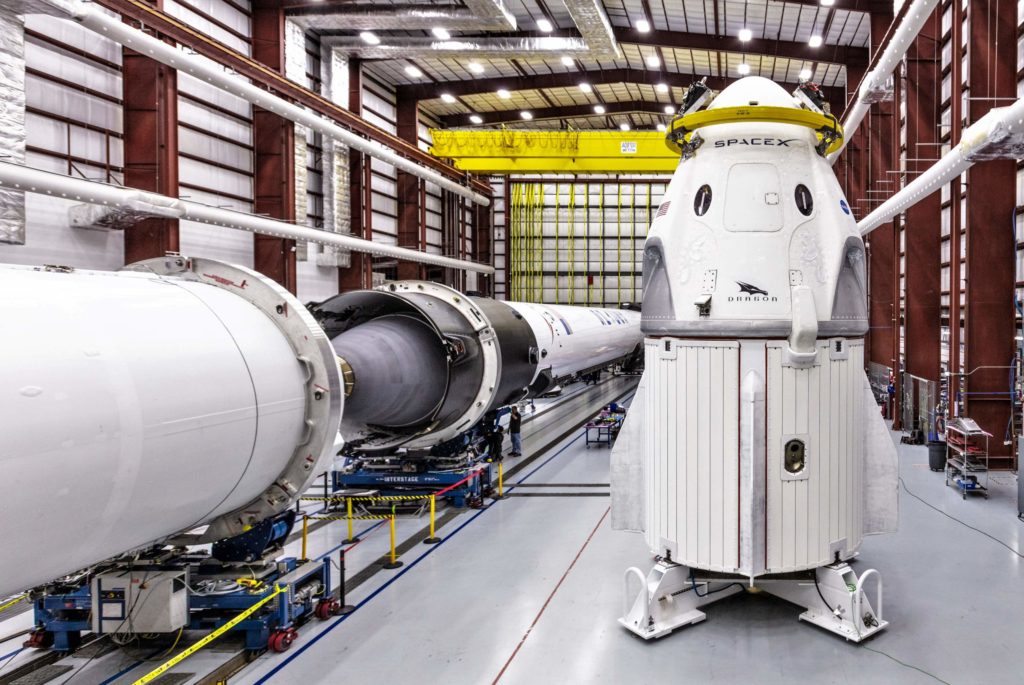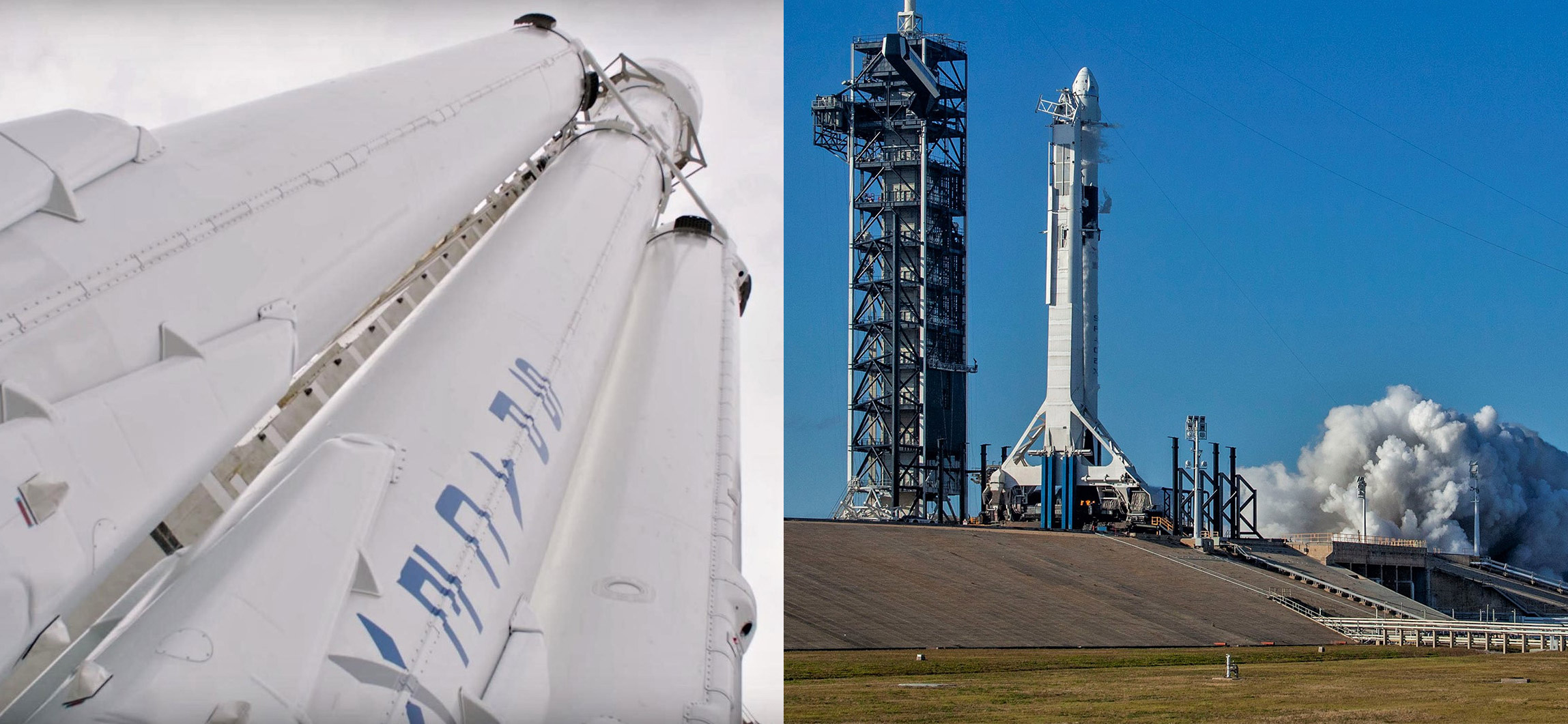
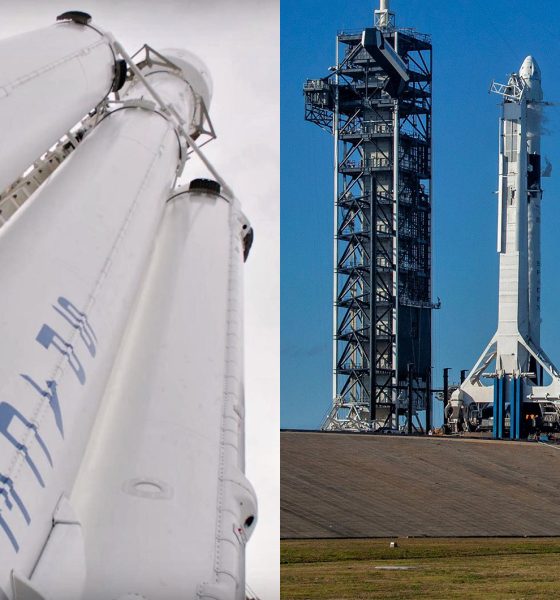
SpaceX
SpaceX’s Crew Dragon launch moves to March, risking Falcon Heavy delays
The planning date for the launch debut of SpaceX’s Crew Dragon spacecraft has been pushed to no earlier than (NET) March 2019 per sources familiar with the matter, potentially creating a direct schedule conflict with the company’s planned operational debut of Falcon Heavy, also NET March 2019.
At the same time as delays to the Commercial Crew Program continue to increase the odds that NASA will lose assured access to the International Space Station (ISS) in 2020, both of SpaceX’s critical missions are entirely dependent upon the support of its Kennedy Space Center-located Launch Complex 39A (Pad 39A), creating a logistical puzzle that will likely delay Falcon Heavy’s second launch until Crew Dragon is safely in orbit.
The latest updates that #SpaceX has made to LC-39A. They have made a lot of progress with the cladding in the last month. #Falcon9 #Space #Spaceflight #SpaceCoast #Florida #KSC @NASASpaceflight pic.twitter.com/sq76IKDc3K
— Tom (@Cygnusx112) February 2, 2019
As of the first week of December 2018, SpaceX was reportedly planning towards a mid-January 2019 launch debut for Crew Dragon. By the end of December, DM-1 was no earlier than the end of January. By the end of January, DM-1 had slipped to from late-February to NET March 2019. Put in slightly different terms, SpaceX’s Crew Dragon launch debut has been more or less indefinitely postponed for the last two months, with planning dates being pushed back at roughly the same pace as the passage of time (i.e. a day’s delay every day).
Admittedly, DM’s apparently indefinite postponement may well be – and probably is – more of an artifact than a sign of any monolithic cause. While the US government’s longest-ever shutdown (35 days) undoubtedly delayed a major proportion of mission-critical work having to do with extensive NASA reviews of SpaceX and Crew Dragon’s launch readiness (known as Readiness Reviews), much of the 60+ day DM-1 delay can probably be attributed to the complexity of the tasks at hand. Being as it is the first time SpaceX has ever attempted a launch directly related to human spaceflight, as well as the first time NASA has been back at the helm (more or less) of US astronaut launch endeavors in more than 7.5 years, significant delays should come as no surprise regardless of how disappointing they may be.
- Crew Dragon and its crew-rated Falcon 9 went vertical at a launch pad (Pad 39A) for the first time ever on January 4th. (SpaceX)
- The whole shebang. (SpaceX)
- The integrated DM-1 Crew Dragon ‘stack’ rolled out to Pad 39A for the first time in the first few days of 2019. (SpaceX)
- A render of Crew Dragon launching atop Falcon 9. (SpaceX)
The most consequential aspect of DM-1’s two-month (at least) delay will likely be the myriad ways it feeds into delays of SpaceX’s in-flight abort (IFA) test and first crewed launch (DM-2), and thus’s NASA’s ability to once again independently launch US astronauts. Given that SpaceX’s DM-2 is expected to occur around six months after DM-1 and that the final certification of Crew Dragon for official astronaut launches will likely take another 2-3 months, these delays – barring heroics or program modifications – are pushing NASA dangerously close to the edge of losing assured US access to the International Space Station (ISS).
According to a July 2018 report, the Government Accountability Office (GAO) analyzed the Commercial Crew Program and NASA’s human spaceflight program more generally and concluded that NASA would lose assured access to the ISS in November 2019 if Boeing and SpaceX continued to suffer delays and were unable to reach certification status by then. This comes as a result of NASA’s reliance on Russian Soyuz launches for access both to and from the ISS, launch and return service contracts which have no replacements (aside from SpaceX and Boeing). While GAO noted that NASA could likely delay that loss of assured access until January 2020, even that might be pushing it if SpaceX’s DM-1 delay continues much further.
“[While NASA is working on potential solutions, it] has not yet developed a contingency plan to address the potential gaps that [future delays in Boeing and SpaceX schedules] could have on U.S. access to the ISS after 2019.” – GAO, July 2018
Prior to DM-1’s delay from NET January to NET March 2019, SpaceX was targeting an In-Flight Abort test roughly three months after DM-1 (it will reuse DM-1’s Crew Dragon capsule), DM-2 six months after DM-1 (NET June 2019), and NASA certification and the first operational astronaut launch (PCM-1) as few as two months after DM-2 (August 2019). It’s reasonable to assume that delays to DM-1 will impact subsequent Crew Dragon launches roughly 1:1, as DM-2 and its many associated reviews hinge directly on DM-1, while the same relationship also exists between PCM-1 and DM-2. As a result, Crew Dragon’s two-month delay probably means that SpaceX’s NASA certification will occur no earlier than October 2019, giving NASA no more than 90 days of buffer before the US presence on the ISS drops from around 50% (3 astronauts) to 0%.
An excellent view of #SpaceX Launch Complex 39A – better known as Pad 39A – from a February 4th Air National Guard (180th Fighter Wing) flyover. Of note, SpaceX has painted the FSS (tower) black and white and is in the process of installing transparent cladding. pic.twitter.com/DTiGWJk1D7
— Eric Ralph (@13ericralph31) February 5, 2019
Crew Dragon and Falcon Heavy walk into a bar…
The unexpected delays to Crew Dragon’s DM-1 launch debut are likely placing SpaceX in an awkward situation with respect to the operational launch debut of Falcon Heavy, meant to place the terminally delayed Arabsat 6A satellite into orbit no earlier than March 7th, 2019 (at the absolute earliest). DM-1 is also targeting a launch sometime in March, posing a significant problem: both Falcon Heavy and Crew Dragon can only launch from Pad 39A, while the on-site hangar simply doesn’t have the space to support schedule-critical Falcon Heavy prelaunch work (mainly booster integration and a static fire test) and no less critical Crew Dragon launch preparations simultaneously.
- SpaceX’s 39A hangar is massive but it would be a stretch to support Crew Dragon and Falcon Heavy simultaneously. (SpaceX)
- An impressive view of Crew Dragon (DM-1), Falcon 9 B1051, and its upper stage. (SpaceX)
Much like SpaceX’s inaugural Falcon Heavy rocket spent a month and a half fully integrated and more than two weeks in a static-fire limbo (albeit due to one-of-a-kind circumstances) before its launch debut, SpaceX’s second Falcon Heavy rocket – comprised of three new Block 5 boosters and Heavy-specific hardware upgrades – is likely to take a good deal more time than a normal Falcon 9 for prelaunch processing. Almost all of that Heavy-specific testing depends on the rocket being integrated (i.e. all three boosters attached) for preflight fit and systems checks and a wet dress rehearsal (WDR) and/or static fire ignition test.
It’s entirely possible that SpaceX integration technicians are able to complete the process of swapping out Crew Dragon and Falcon 9, modifying the transport/erector (T/E), completing Falcon Heavy booster integration, and installing Falcon Heavy on the T/E quickly enough to allow for simultaneous DM-1 and Arabsat 6A processing. It’s also possible that an extremely elegant but risky alternative strategy could solve the logistical puzzle – as an example, SpaceX could roll Crew Dragon and Falcon 9 out to Pad 39A a week or more before launch to give Falcon Heavy enough space for full integration, whereby Falcon 9’s necessarily successful launch would clear the T/E and allow it to be rolled back into 39A’s hangar for Falcon Heavy installation.
Falcon Heavy at the Cape pic.twitter.com/hizfDVsU7X
— Elon Musk (@elonmusk) December 20, 2017
The most likely (and least risky) end result, however, is an indefinite delay for Falcon Heavy Flight 2, pending the successful launch of Crew Dragon. This is very much an instance where “wait and see” is the only route to solid answers, so wait and see we shall.
Check out Teslarati’s newsletters for prompt updates, on-the-ground perspectives, and unique glimpses of SpaceX’s rocket launch and recovery processes!

Elon Musk
Starlink passes 9 million active customers just weeks after hitting 8 million
The milestone highlights the accelerating growth of Starlink, which has now been adding over 20,000 new users per day.

SpaceX’s Starlink satellite internet service has continued its rapid global expansion, surpassing 9 million active customers just weeks after crossing the 8 million mark.
The milestone highlights the accelerating growth of Starlink, which has now been adding over 20,000 new users per day.
9 million customers
In a post on X, SpaceX stated that Starlink now serves over 9 million active users across 155 countries, territories, and markets. The company reached 8 million customers in early November, meaning it added roughly 1 million subscribers in under seven weeks, or about 21,275 new users on average per day.
“Starlink is connecting more than 9M active customers with high-speed internet across 155 countries, territories, and many other markets,” Starlink wrote in a post on its official X account. SpaceX President Gwynne Shotwell also celebrated the milestone on X. “A huge thank you to all of our customers and congrats to the Starlink team for such an incredible product,” she wrote.
That growth rate reflects both rising demand for broadband in underserved regions and Starlink’s expanding satellite constellation, which now includes more than 9,000 low-Earth-orbit satellites designed to deliver high-speed, low-latency internet worldwide.
Starlink’s momentum
Starlink’s momentum has been building up. SpaceX reported 4.6 million Starlink customers in December 2024, followed by 7 million by August 2025, and 8 million customers in November. Independent data also suggests Starlink usage is rising sharply, with Cloudflare reporting that global web traffic from Starlink users more than doubled in 2025, as noted in an Insider report.
Starlink’s momentum is increasingly tied to SpaceX’s broader financial outlook. Elon Musk has said the satellite network is “by far” the company’s largest revenue driver, and reports suggest SpaceX may be positioning itself for an initial public offering as soon as next year, with valuations estimated as high as $1.5 trillion. Musk has also suggested in the past that Starlink could have its own IPO in the future.
News
SpaceX shades airline for seeking contract with Amazon’s Starlink rival

SpaceX employees, including its CEO Elon Musk, shaded American Airlines on social media this past weekend due to the company’s reported talks with Amazon’s Starlink rival, Leo.
Starlink has been adopted by several airlines, including United Airlines, Qatar Airways, Hawaiian Airlines, WestJet, Air France, airBaltic, and others. It has gained notoriety as an extremely solid, dependable, and reliable option for airline travel, as traditional options frequently cause users to lose connection to the internet.
Many airlines have made the switch, while others continue to mull the options available to them. American Airlines is one of them.
A report from Bloomberg indicates the airline is thinking of going with a Starlink rival owned by Amazon, called Leo. It was previously referred to as Project Kuiper.
American CEO Robert Isom said (via Bloomberg):
“While there’s Starlink, there are other low-Earth-orbit satellite opportunities that we can look at. We’re making sure that American is going to have what our customers need.”
Isom also said American has been in touch with Amazon about installing Leo on its aircraft, but he would not reveal the status of any discussions with the company.
The report caught the attention of Michael Nicolls, the Vice President of Starlink Engineering at SpaceX, who said:
“Only fly on airlines with good connectivity… and only one source of good connectivity at the moment…”
CEO Elon Musk replied to Nicolls by stating that American Airlines risks losing “a lot of customers if their connectivity solution fails.”
American Airlines will lose a lot of customers if their connectivity solution fails
— Elon Musk (@elonmusk) December 14, 2025
There are over 8,000 Starlink satellites in orbit currently, offering internet coverage in over 150 countries and territories globally. SpaceX expands its array of satellites nearly every week with launches from California and Florida, aiming to offer internet access to everyone across the globe.
Currently, the company is focusing on expanding into new markets, such as Africa and Asia.
News
Tesla hints at Starlink integration with recent patent
“By employing polymer blends, some examples enable RF transmission from all the modules to satellites and other communication devices both inside and outside the vehicle.”

Tesla hinted at a potential Starlink internet terminal integration within its vehicles in a recent patent, which describes a vehicle roof assembly with integrated radio frequency (RF) transparency.
The patent, which is Pub. No U.S. 2025/0368267 describes a new vehicle roof that is made of RF-transparent polymer materials, allowing and “facilitating clear communication with external devices and satellites.”
Tesla believes that a new vehicle roof design, comprised of different materials than the standard metallic or glass elements used in cars today, would allow the company to integrate modern vehicular technologies, “particularly those requiring radio frequency transmission and reception.
Tesla has recently filed a US patent application on integrating RF transparent materials into the roof structure.
“facilitating clear communication with external devices and satellites”
Tesla fleet is getting @Starlink connectivity integration soon. LFG @Tesla @elonmusk… pic.twitter.com/bLa8YtPLd1
— Chansoo Byeon (@Chansoo) December 9, 2025
Instead of glass or metallic materials, Tesla says vehicles may benefit from high-strength polymer blends, such as Polycarbonate, Acrylonitrile Butadiene Styrene, or Acrylonitrile Styrene Acrylate.
These materials still provide ideal strength metrics for crashworthiness, stiffness for noise, vibration, and harshness control, and are compliant with head impact regulations.
They would also enable better performance with modern technologies, like internet terminals, which need an uninterrupted signal to satellites for maximum reception. Tesla writes in the patent:
“By employing polymer blends, some examples enable RF transmission from all the modules to satellites and other communication devices both inside and outside the vehicle.”

One of the challenges Tesla seems to be aware of with this type of roof design is the fact that it will still have to enable safety and keep that at the forefront of the design. As you can see in the illustration above, Tesla plans to use four layers to increase safety and rigidity, while also combating noise and vibration.
It notes in the patent that disclosed examples still meet the safety requirements outlined in the Federal Motor Vehicle Safety Standards (FMVSS).
Starlink integrated directly into Tesla vehicles would be a considerable advantage for owners. It would come with a handful of distinct advantages.
Initially, the inclusion of Starlink would completely eliminate cellular dead zones, something that is an issue, especially in rural areas. Starlink would provide connectivity in these remote regions and would ensure uninterrupted service during road trips and off-grid adventures.
It could also be a critical addition for Robotaxi, as it is crucial to have solid and reliable connectivity for remote monitoring and fleet management.
Starlink’s growing constellation, thanks to SpaceX’s routine and frequent launch schedule, will provide secure, stable, and reliable internet connectivity for Tesla vehicles.
Although many owners have already mounted Starlink Mini dishes under their glass roofs for a similar experience, it may be integrated directly into Teslas in the coming years, either as an upgrade or a standard feature.
